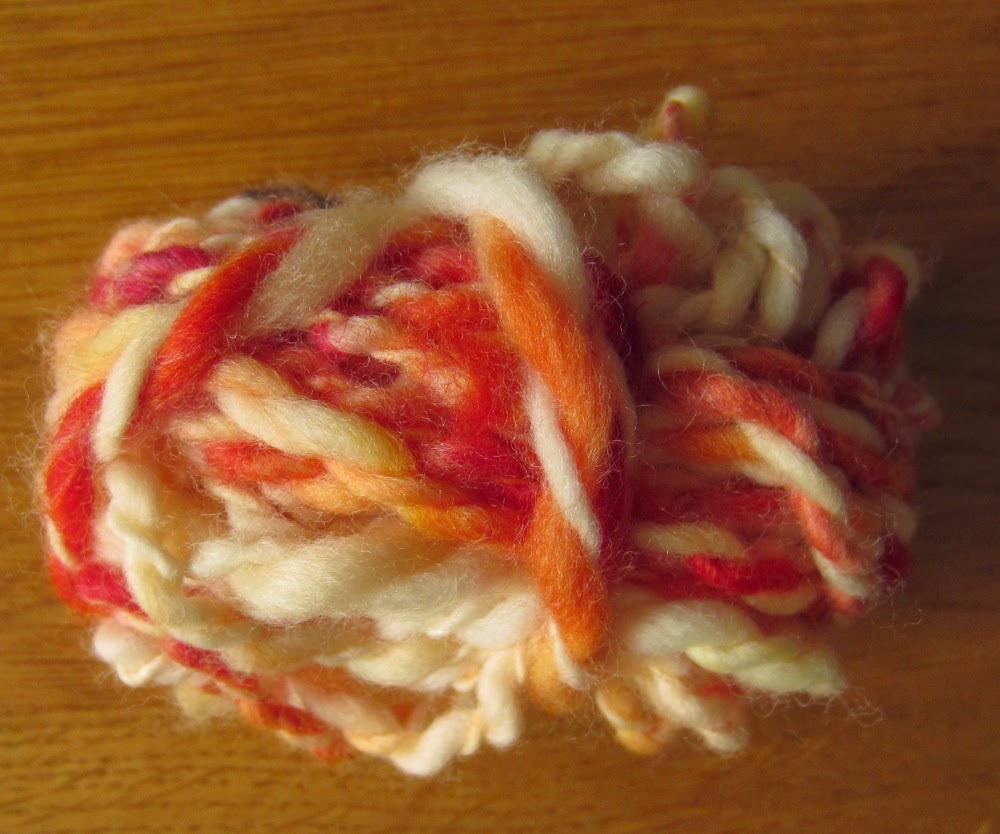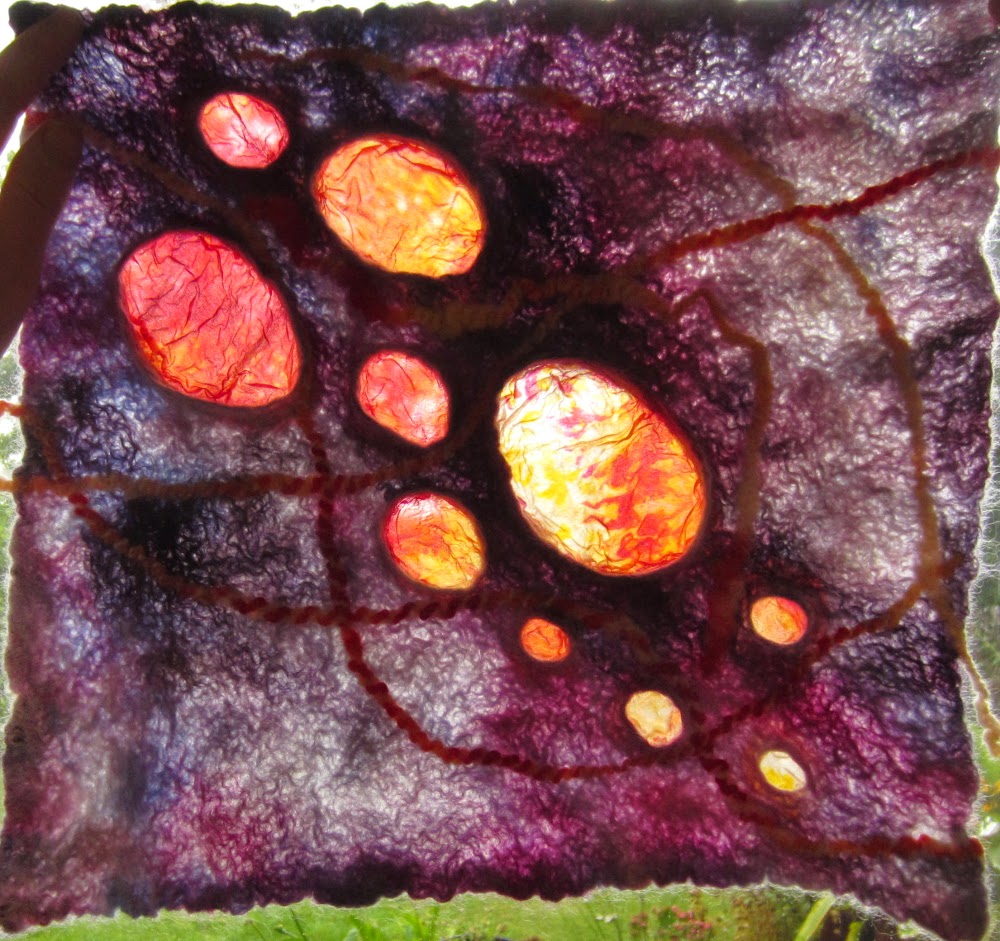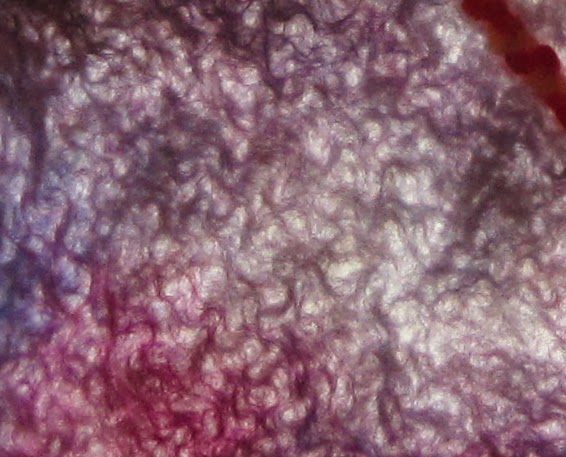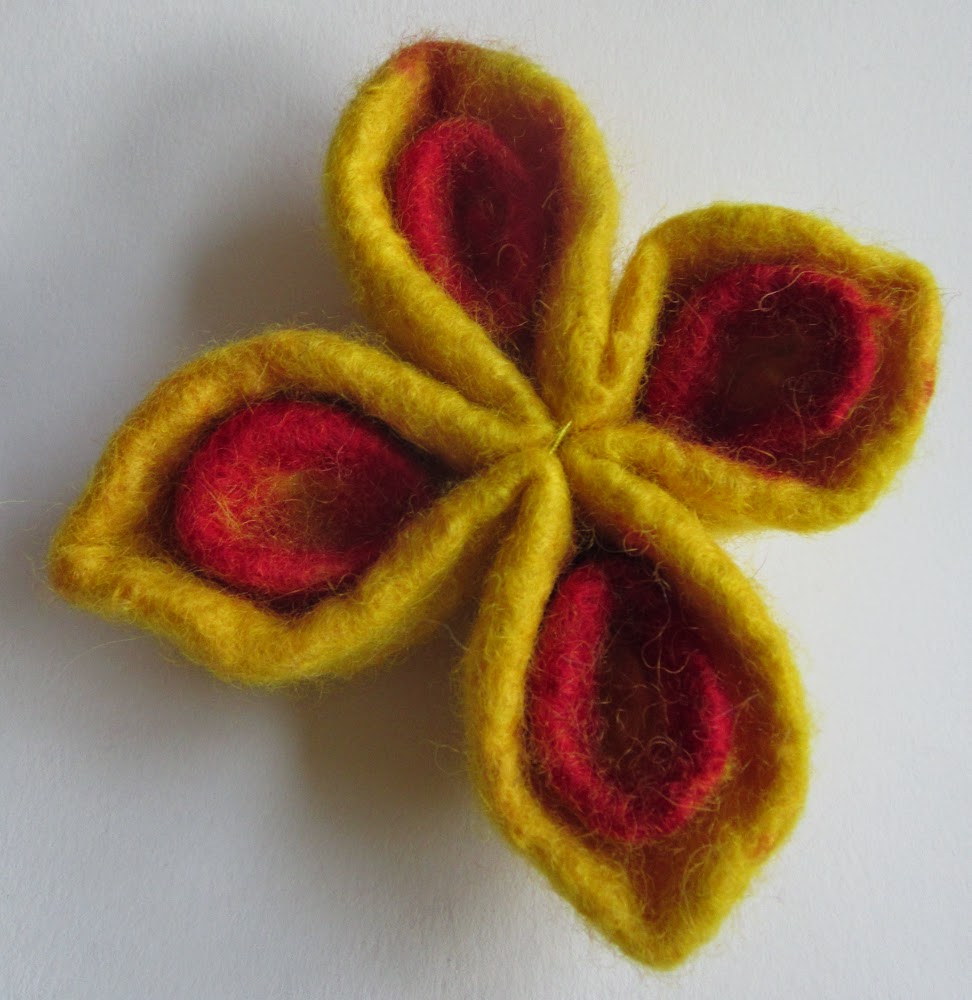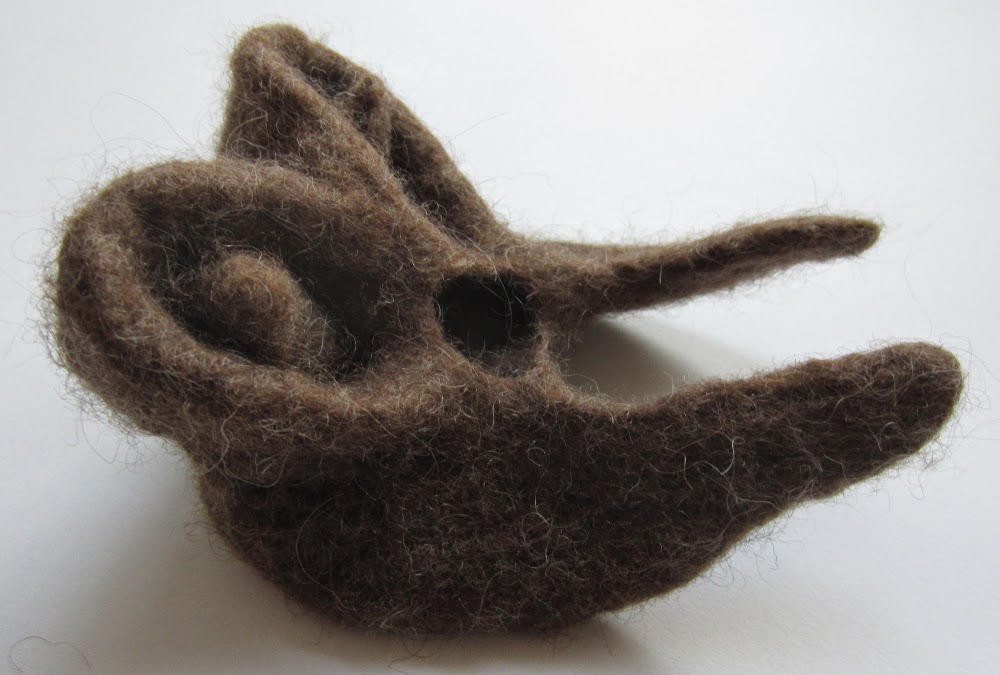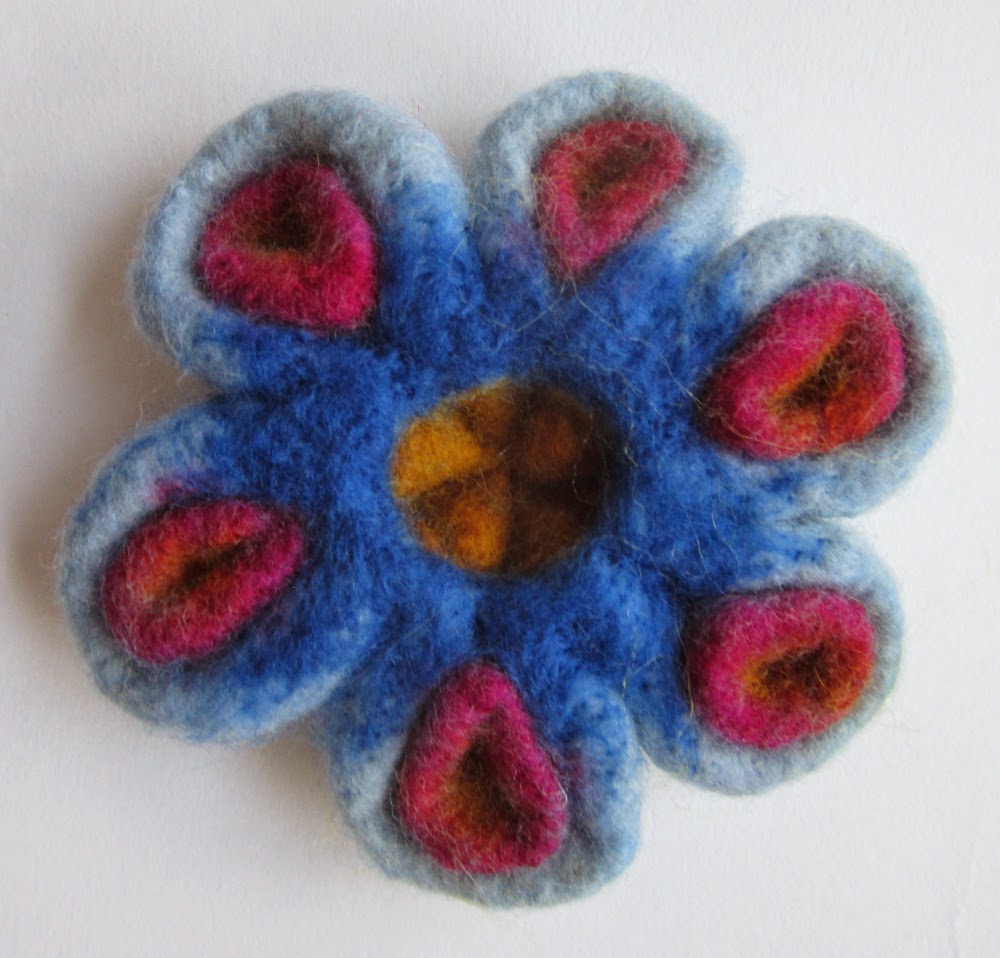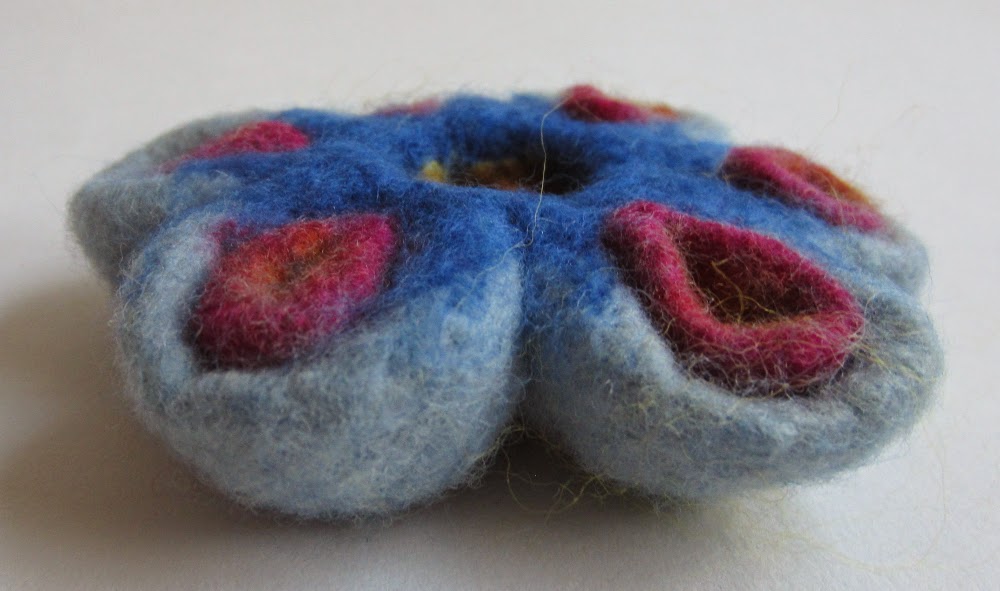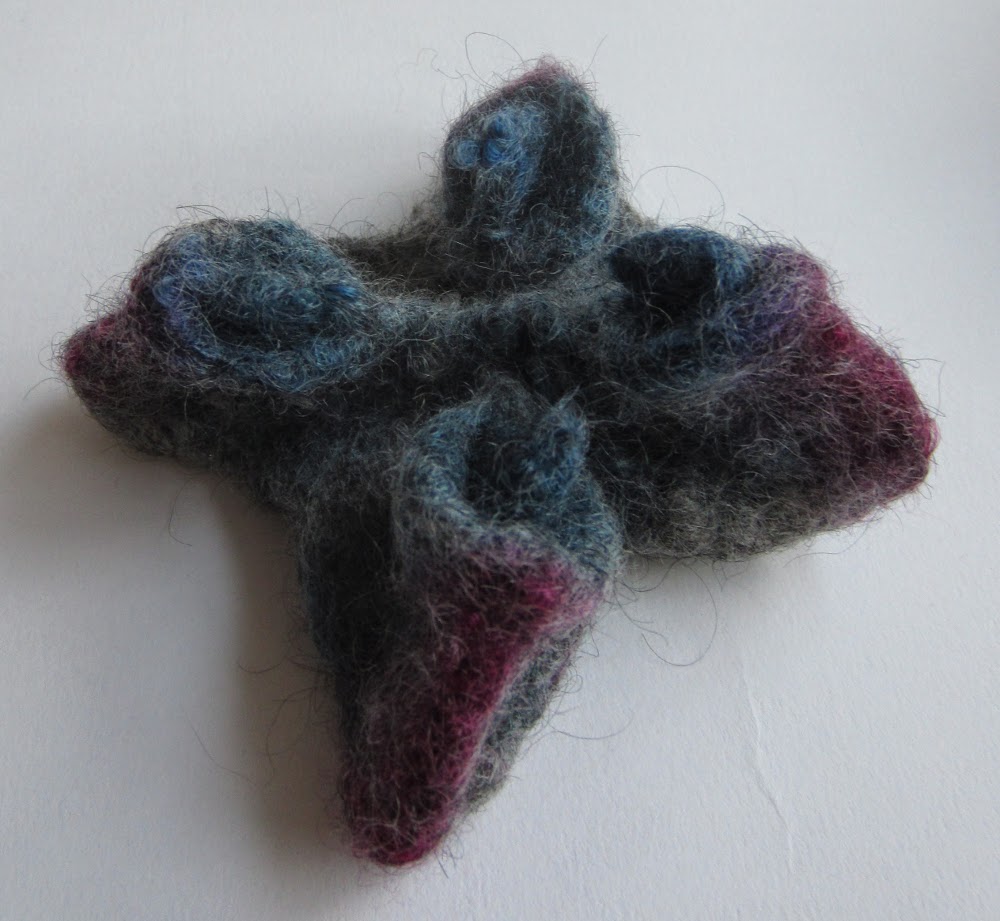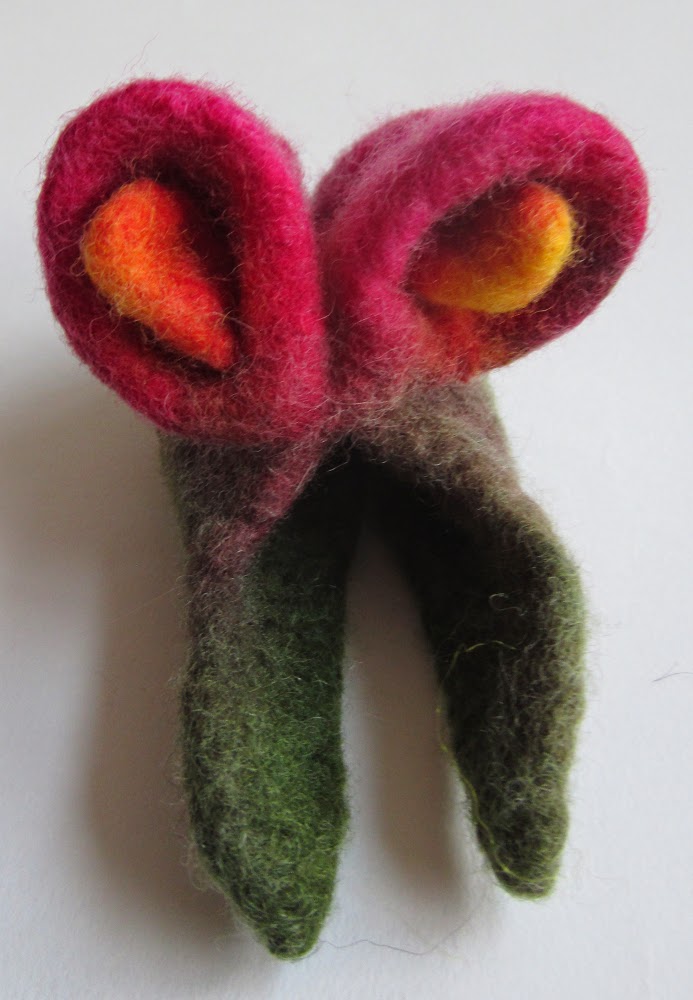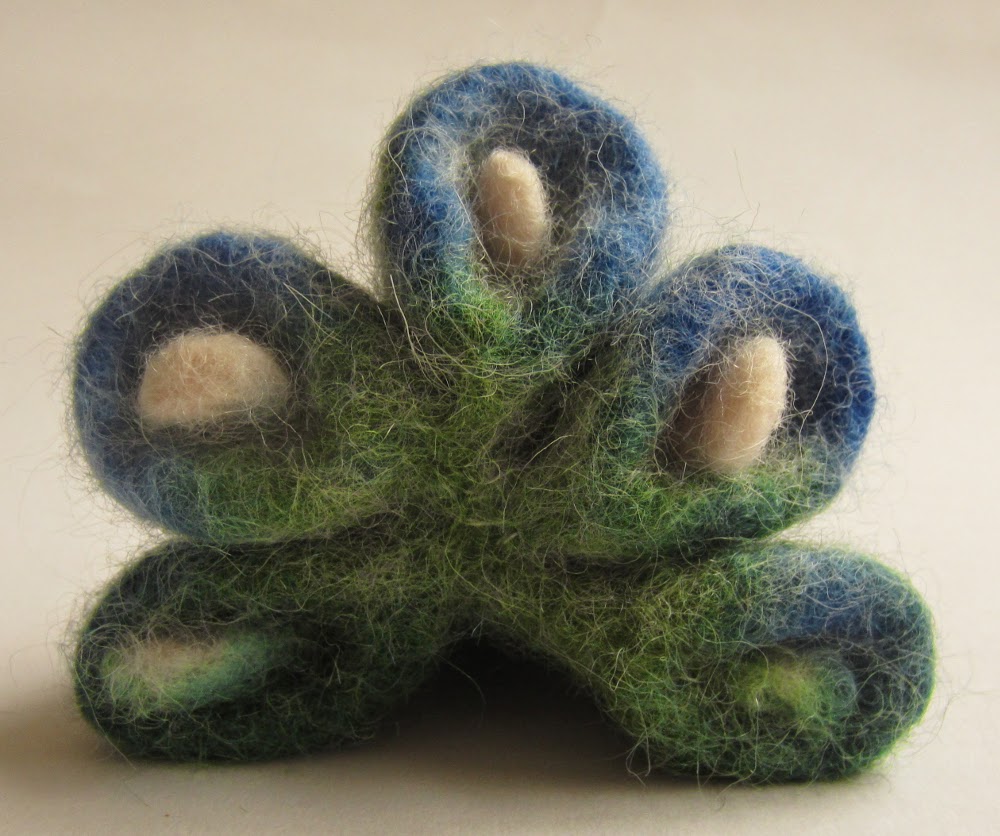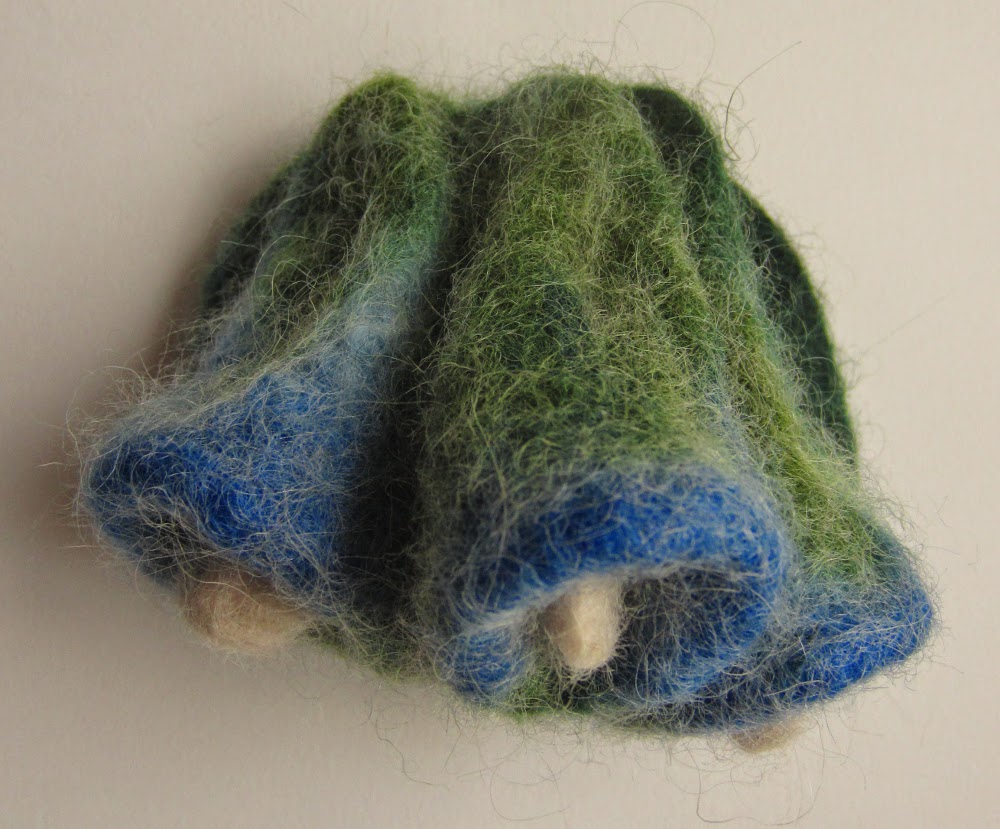During the workshop by Yvonne Habbe we almost exclusively used the wool batts that she provided, they were Swedish Fine Wool, not a breed / type of wool I had encountered before and it appears not one that is widely available either. It was lovely to work with but given it’s apparent scarcity I have been experimenting with different breeds to find a suitable alternative for small sculptures. The list below is by no means exhaustive, it just represents what I had in my wool stash (even I was surprised by the range of what I found when I pulled all the bags out!).
As a point of interest all of the pieces below were made from the same resist, I think it shows how versatile this technique is, the only limit to the shapes that can be formed is my imagination….
Swedish Fine Wool
This was my control against which all the other breeds were compared.
It felted easily, making a firm felt with nice sharp folds.
Overall assessment – very good
This piece was dyed after sculpting.
Corriedale
Felted quickly and firmly holding 3D forms very well but not so easy to make sharp folds.
Overall assessment – moderate to good
Zwartables
This breed was a disaster. I was using raw fleece, it was incredibly difficult to lay out (I really should have scoured and carded it first) and I could not persuade it to felt. I gave up in the end. I think this wool will be nice blended with another breed but I don’t hold out any hope for 3D felt sculptures.
Overall assessment – poor
Blue Faced Leicester (BFL)
Felted easily, holding 3D shapes well and formed reasonably sharp folds
Overall assessment – good to very good
Red dye was added to the finished piece
Shetland
Felted easily and made a firm felt that held the 3D shapes well but did not form sharp folds (I may have laid it out too thickly).
Overall assessment – poor to moderate
Polwarth
This was a lovely wool to work with, it felted very easily and had a softness I would normally associate with fine merino. It holds 3D shapes reasonably well but is a bit too flexible / soft for structural pieces, it formed nice sharp folds though.
Overall assessment – Good for small pieces
Merino
Moderately easy to felt, folds well but not as sharply as BFL (possibly due to needing to full further to get it to hold a 3D shape).
Overall assessment – Moderate to good
Red and yellow dyes were used to add some colour and dark blue merino was needle felted from the centre to provide tonal balance
Gotland Lambswool
Little bit slow to felt, made a firm felt that held 3D forms very well and could make reasonably sharp folds. I think this wool could be used for larger structures.
These are the lovely locks before I carded them
Overall assessment – good to very good
Blue and red acid fast dyes were used to add some colour
Finnish
Felted easily, made nice firm shapes and reasonably sharp folds.
Overall assessment – good to excellent for larger sculptures
Green and red details were needle felted onto the finished piece.
Jacob
Felted well and formed tight folds but not as firm / structurally strong as some of the others. Fine for smaller pieces.
Overall assessment – moderate
South American
Slow to felt, holds 3D shapes well but difficult to make sharp folds.
Overall assessment – poor to moderate
This piece was dyed after sculpting
Norwegian
This wool has quite coarse fibres that were difficult to mould around the small resist, made a prefelt quite quickly but took a while to full. The finished felt is quite hairy and was difficult to form sharp folds
Overall assessment – poor
Summary
For small sculptures I think BFL is the winner with Gotland lambswool a close second. Finnish is my favourite for larger sculptures. I think special mention is due to Polwarth, this is the first time I have felted with this and it was lovely to work with, so soft and felted easily, it would be lovely for felt pieces worn next to the skin.
Obviously this is just how these wools behaved in my hands and everyone felts differently but I hope this will be a helpful reference for anyone thinking of embarking on a sculptural felt adventure 🙂








